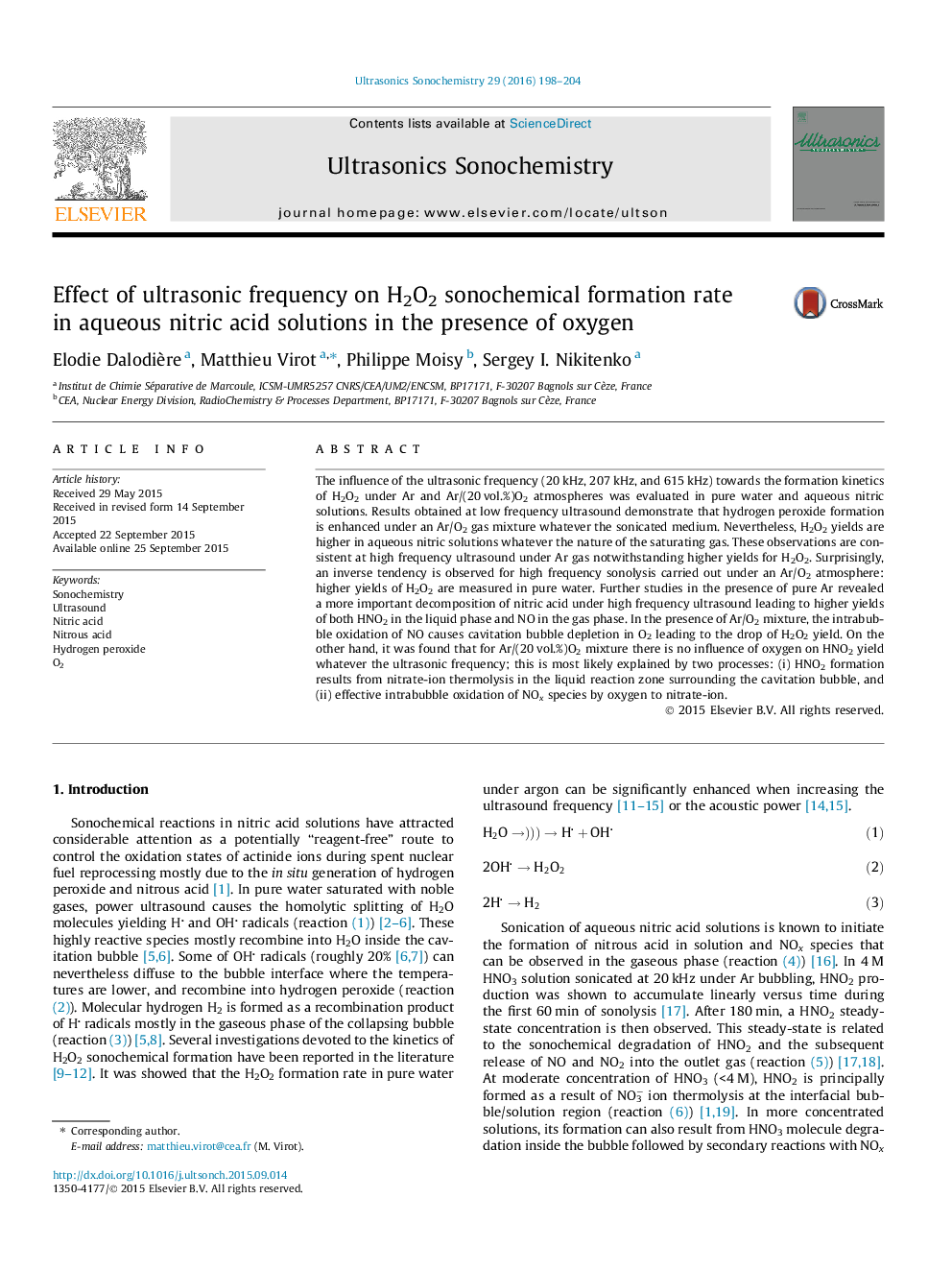| Article ID | Journal | Published Year | Pages | File Type |
|---|---|---|---|---|
| 1265865 | Ultrasonics Sonochemistry | 2016 | 7 Pages |
•Greater decomposition of nitric acid is observed with increasing ultrasound frequency.•In sonicated nitric media, the presence of oxygen involves the intra-bubble oxidation of NOx.•A reverse effect can be driven under ultrasound when changing the applied acoustic frequency.
The influence of the ultrasonic frequency (20 kHz, 207 kHz, and 615 kHz) towards the formation kinetics of H2O2 under Ar and Ar/(20 vol.%)O2 atmospheres was evaluated in pure water and aqueous nitric solutions. Results obtained at low frequency ultrasound demonstrate that hydrogen peroxide formation is enhanced under an Ar/O2 gas mixture whatever the sonicated medium. Nevertheless, H2O2 yields are higher in aqueous nitric solutions whatever the nature of the saturating gas. These observations are consistent at high frequency ultrasound under Ar gas notwithstanding higher yields for H2O2. Surprisingly, an inverse tendency is observed for high frequency sonolysis carried out under an Ar/O2 atmosphere: higher yields of H2O2 are measured in pure water. Further studies in the presence of pure Ar revealed a more important decomposition of nitric acid under high frequency ultrasound leading to higher yields of both HNO2 in the liquid phase and NO in the gas phase. In the presence of Ar/O2 mixture, the intrabubble oxidation of NO causes cavitation bubble depletion in O2 leading to the drop of H2O2 yield. On the other hand, it was found that for Ar/(20 vol.%)O2 mixture there is no influence of oxygen on HNO2 yield whatever the ultrasonic frequency; this is most likely explained by two processes: (i) HNO2 formation results from nitrate-ion thermolysis in the liquid reaction zone surrounding the cavitation bubble, and (ii) effective intrabubble oxidation of NOx species by oxygen to nitrate-ion.
